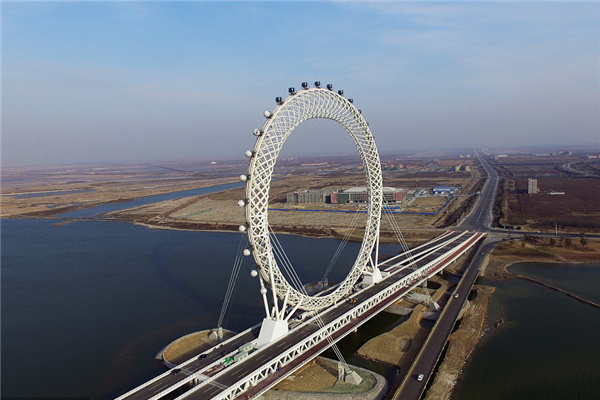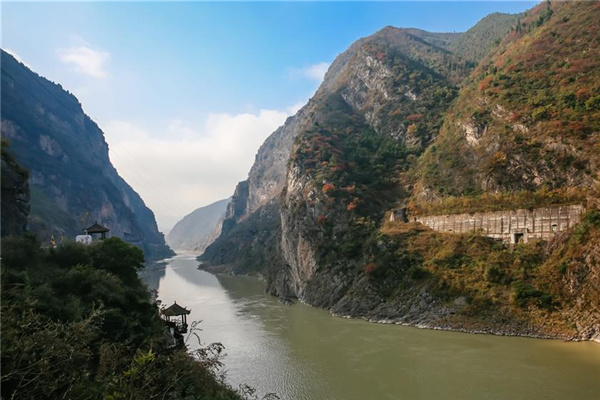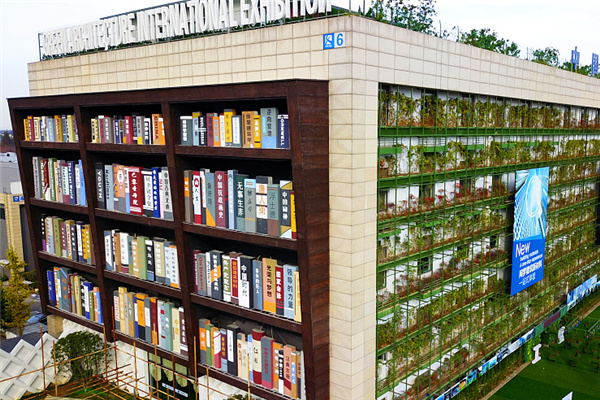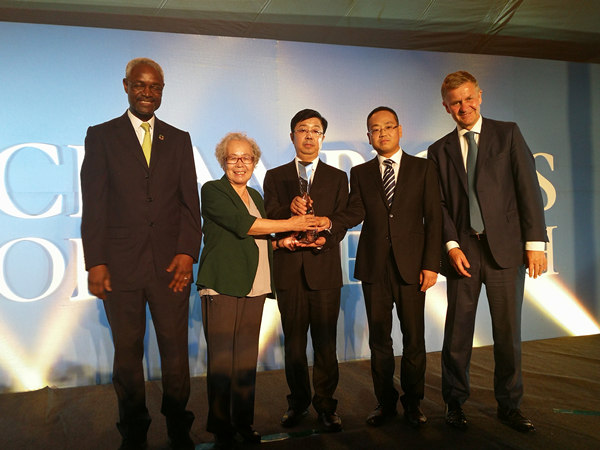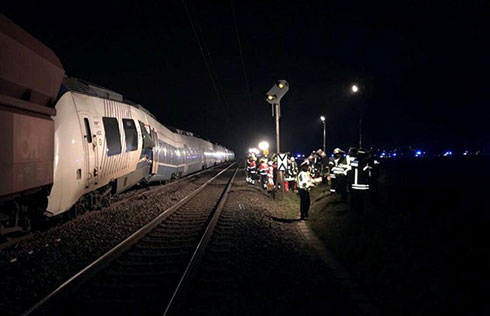

|
New scrubbers at Alcoa's Warrick Power Plant. White plumes are steam, a result of cleaning pollutants. Once all four of its units are installed, the red and white chimneys will no longer be used. |
Editor's note: In a previous Alcoa energy column, the global aluminum giant shared with partners and competitors its approaches to reducing emissions created during production processes. This week Alcoa showcases examples of the firm's efforts. Although Alcoa has no smelting operations in China, the company shares approaches that can be used in the Chinese aluminum industry:
Brazil: waste into products
Production wastes from Alcoa's Brazilian refineries and smelters are being diverted from landfills and converted into commercially viable products - minimizing their environmental impact and providing new sources of revenue.
One of Alcoa's key sustainability goals is to have zero landfilled waste by 2015. To help achieve that goal, the company has developed a global framework for evaluating and then commercializing its industrial waste for re-use in other industries. There are six stages to the process - concept development, feasibility and lab work, testing, pilot plant demonstration, plant re-use demonstration and implementation.
In Brazil, Alcoa's department of applications, development and special product sales has made significant progress in converting a number of major refining and smelting wastes into commercial products.
Carbon cryolite, a byproduct of the Soderberg smelting process, is now used as an alternative fuel in cement making. Alcoa's Pocos de Caldas smelter sells about 1,000 metric tons of the material each month, which will allow it to eliminate all of its stored cryolite - which the smelter has not produced since 2003 - by mid-2009.
Since 2004, Pocos de Caldas has been selling all of its aluminum oxide dust, fine particles produced in the refining process, collected from the calciner department at the refinery as an alumina source for the enrichment of chamot - an inexpensive refractory aggregate.
A second application for dust is being developed for the Alcoa smelter in Sao Lus, Brazil, which is located too far from most refractory producers. Sao Lus is currently selling the coal dust generated from its boilers as another alternative fuel source for the cement industry. Almost 12,000 tons of the dust is being diverted from the landfill each year.
The Brazilian locations are also investigating several potential commercial applications for bauxite residue, the largest volume waste of the refining process. They are working closely in this effort with Alcoa's Australian researchers, who are also developing processes to convert the residue into a raw material for a variety of applications. Primary initiatives include converting the residue for use in the ceramic tile, agriculture, and cement industries.
Australia: improved practices
Alcoa is working at its Australian operations to reduce emissions through improvements in technology and operating practices. Since 2002, Alcoa's Point Henry and Portland Aluminium smelters have reduced their fluoride air emissions by 49 percent through improvements in emission management systems, real-time laser-based monitoring technology and operating practices.
The Point Henry smelter reported increased emissions of polycyclic aromatic hydrocarbons (PAHs) in 2005. The facility investigated the reason for the increase and carried out an overhaul of the carbon bake operation. Subsequent monitoring in November 2005 found this work had reduced carbon bake PAH emissions by 75 percent.
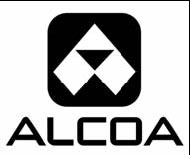
The Anglesea power station is using a combination of real-time monitoring technology and operating protocols to manage ambient sulfur dioxide (SO2) levels. Real-time monitoring stations around Anglesea transmit information about ambient SO2 levels back to the power station control room. If these levels rise above a trigger point, the power station load is decreased with the objective of keeping ground-level SO2 concentrations below Environmental Protection Agency guideline levels.
In Western Australia, the Pinjarra refinery has reduced volatile organic compound (VOC), carbon monoxide and other emissions through the installation of a regenerative thermal oxidizer on the oxalate kiln. Improvements to its Wagerup refinery's calciner helped reduce formaldehyde emissions by 10 percent across the refinery and total VOC emission by 3 percent in 2004 and 2005. Wagerup's total VOC emissions have been reduced by 68 percent since 2001-02.
The installation of a low nitrogen oxide (NOx) burner in Wagerup refinery's power house contributed to a 36 percent cut in NOx emissions.
New emission reduction equipment has been installed on the Kwinana liquor burner, including an additional particulate filter, a three-stage wet scrubber, and a regenerative thermal oxidizer. This equipment, along with process control systems, will help reduce most emissions by more than 95 percent.
All of Alcoa's Australian operations report emissions to the National Pollutant Inventory, an Australian government database that reports emissions from a variety of sources.
US: new rolling method
Alcoa has also used technology to reduce emissions in its downstream rolling operations. Earlier this decade, Alcoa's Davenport, Iowa plant was nearly forced to abandon producing bright tread sheet - aluminum plate with diamond-shaped embossing - because of emission opacity concerns and high production costs. Due to the product's textured surface, significant coolant remained on the sheet as it left the cold rolling mill. This residual coolant caused the formation of visible emissions at the mill and required the sheet to be washed prior to further processing and shipment, significantly increasing costs and reducing productivity.
Davenport first looked at end-of-pipe treatment to reduce opacity by means of a $3 million air pollution control system. Instead, a small team pursued process changes that enable the line to run with only a very light coating of lubricant sprayed directly onto the sheet's surface. By introducing a new method for cold rolling this product, Alcoa's US plant was able to reduce visible emissions by 90 percent, increase finishing line speeds and save $3.5 million a year in production costs.
Benefits of the new process were good for both the environment and the business: the elimination of the need to use perchlorethylene to wash the product further reduced emissions and waste, purchase of expensive pollution control equipment was avoided and flow time for tread sheet was significantly reduced.
(China Daily 06/30/2008 page5)


